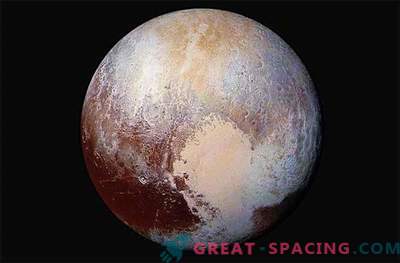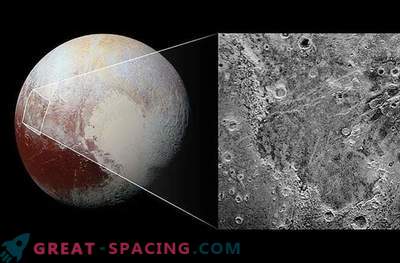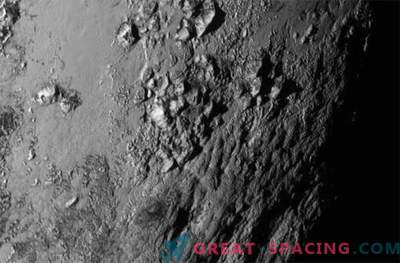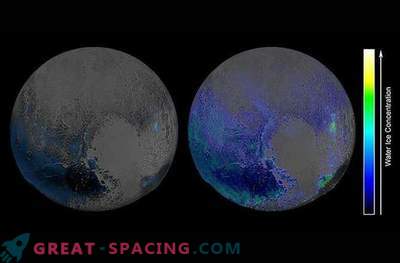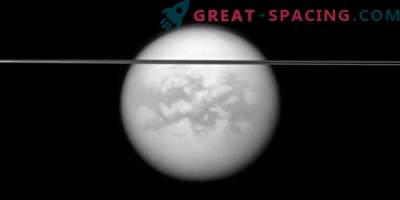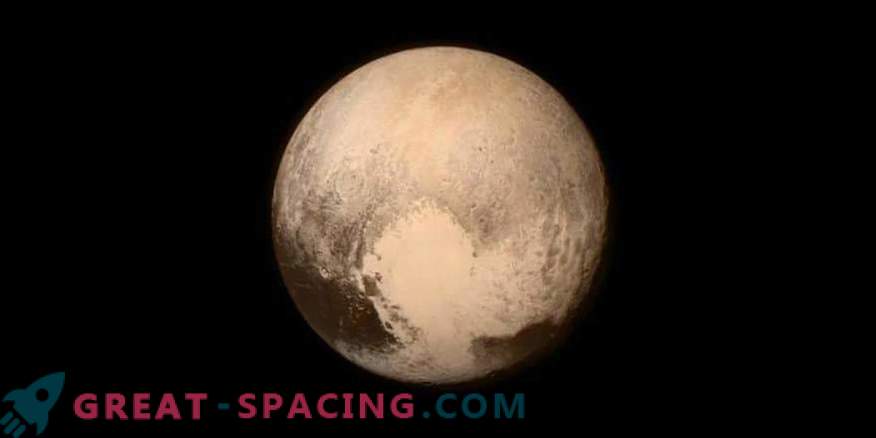
No longer a planet, but continues to intrigue scientists! Back in 2016, the possibility of having a liquid ocean under the surface of Pluto was widely discussed. Now, researchers are trying to understand whether life can be born in this water.
Mysterious Dwarf Planet
We can say that since the discovery in 1930 Pluto has remained a mysterious distant world. Because of the distance they could only believe that it is completely covered with ice and dead. Some information came from the Hubble Space Telescope. They wanted to send Voyager-1, but still preferred his flight to Titan.
All information we have obtained from the passage of the spacecraft New Horizons in 2015. Scientific research began almost six months before approaching, and it was possible to get as close as possible to 12.5 thousand km from the surface layer.
What was discovered on Pluto?

A dusty layer of haze reveals a blue glow captured by the MVIC camera on the New Horizons machine. It is believed that the formation resembles what was seen on the satellite of Saturn Titan. The source can be activated by sunlight chemical reactions between nitrogen and methane. This causes the creation of small soot-like particles (tolina) that grow as they approach the surface. For the snapshot, software that takes into account blue, red and near infrared images was used to create the color available to the human eye. Despite the fact that we are no longer a planet (since 2006), but a dwarf type, this world turned out to be much more active than we could imagine. It turned out that Pluto has an atmosphere. Yes, it is extremely weak and sparse, but there is. In addition, there is geological activity. And it is in the ice world!
On the surface there is noticeably a huge number of cracks and rifts, and on top there is a giant glacier. Since many large impact craters (small ones, about 5000) could not be found, it was suggested that the surface was formed relatively recently (about 10 million years ago).
There are also suspicions about cryovolcanism, where not volcanic lava flows from the volcano, but water, methane or ammonia (in liquid form). Surprised by the presence of dunes, suggesting the existence of wind! But the most intriguing discovery was the possible presence of liquid ocean below the surface.
Surprise under the bark

This high-resolution snapshot obtained New Horizons on December 24, 2015, which shows the territory of the Satellite Plain. This is the part of the image where the resolution is 77-85 m per pixel. One can notice the cellular structure of the plains, which could have been caused by a convective explosion in nitrogen ice. The image contains a strip with a width of 80 km and a length of 700 km, stretching from the northwestern part of the Sputnik Plain to the ice part. Done using the LORRI tool at a distance of 17,000 km.
Pluto has a rather eccentric orbit. Therefore, as it rotates around the Sun, the dwarf planet approaches and moves away in the range 29.7-49.3 a. e from the star. This is an incredibly huge distance. Refers to the objects of the Kuiper belt, and therefore is perceived as a frozen lifeless body. In addition, the temperature drops to -230 ° C. How can you even discuss the possibility of the presence of a liquid ocean?
In the photographs of the spacecraft, special attention is attracted by the Plain Satellite located in the Heart of Pluto (Tombo region). It is believed that it was formed after the collision of a dwarf planet and a large meteorite. The collision vomited some of the material and created a large pool.
Researchers have carefully studied this area and realized that it can hide liquid. This is indicated by the very form of the territory, as well as the strange gravitational connection with the satellite Charon (the “heart” is almost exactly aligned with the moon).
Why doesn't it freeze?
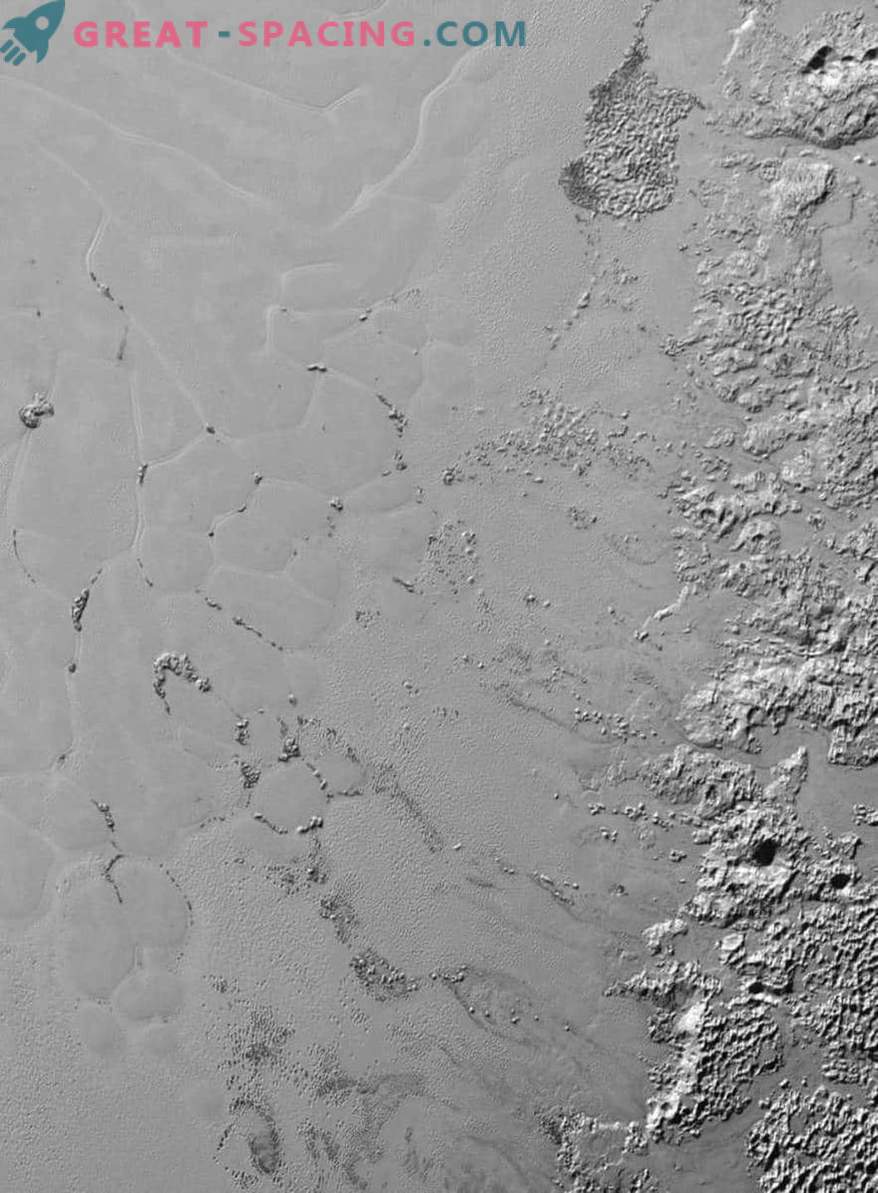
Nitrogen glaciers can carry an interesting load - a huge number of isolated hills that can act as parts of water ice from planetary surroundings. Each stretches for several kilometers. The hills reside on the vast Plain of the Sputnik or in the "heart" of Pluto. This is an example of amazing geological activity on the planet.
There are several assumptions about the ocean. At first it was believed that it was a viscous ocean from liquid ice, which remains in this state due to radioactive decay in the stone core of Pluto or due to the presence of ammonia. There is also the idea that the oceanic composition is represented by methanol and ethanol, methane, ethane and more complex molecules. This whole mixture acts as an antifreeze, so that this consistency is rather not liquid, but viscous or slushy. The presence of poisonous ammonia is not ruled out (New Horizons found substances on Charon and one of the smaller moons of Pluto). In fact, we have a poisonous, cold, salty syrup.
Is it possible to find life?
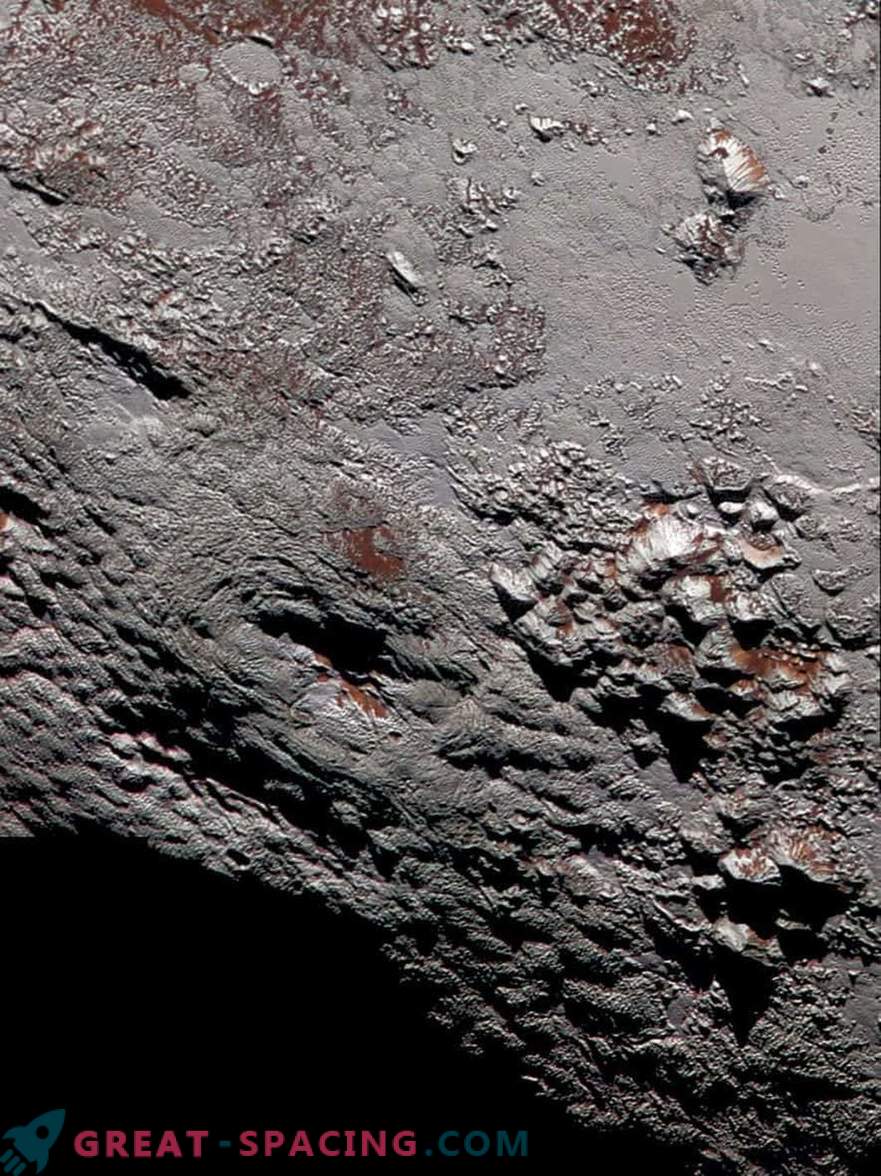
Researchers at New Horizons provided a high-resolution color snapshot of one of two potential cryovolcanoes seen in July 2015. Wright Mons got its name in honor of the inventors of the aircraft - Wright brothers. It stretches for 150 km and rises for 4 km. Before you is an ice volcano, which may be the largest such formation. Scientists are intrigued by the unusual distribution of red material and wonder why he did not go further. Also, one crater hints that the impact occurred relatively recently. So, cryovolcan was active in the recent past. The composite frame contains images dated August 14, 2015, taken with the LORRI tool at a distance of 48,000 km. The color is enhanced by an MVIC camera with a range of 34,000 km and an extension of 650 m per pixel. Total image covered 230 km.
Researchers still cannot say how much ammonia is in the ocean (in theory). The fact is that 10-35% cause serious burns with blisters and scars. However, using the example of the Earth, it is possible to understand that life does not stop fighting and survives even in the most extreme conditions (for example, below Antarctic ice or at great depth without light). Professor William MacKinnon says that we cannot detect habitual life forms, such as fish, squid or microbes. However, we judge life by earthly environment. But on many satellites there are exotic seas and oceans, such as methane. Is there a chance that life has other forms adapted to similar conditions?
McKinnon is not sure that this is possible. Life endures cold or intense heat, but it does not resist the abundance of ammonia. Moreover, the ocean of Pluto is covered with a dense ice layer. Scientists believe that the maximum that can be counted on is the presence of the most primitive organisms.
But other scientists are hoping for a chance. For example, Alan Stern (he is still trying to return planet status to Pluto). Astrobiologist David Greenspoon relies on the presence of a large amount of organic matter and energy sources.
Postscript
The findings of the researchers are encouraging. There is a chance for life, although we are not at all sure how exactly the local representatives can live in the mysterious ocean under a dense ice cover (if they exist at all). What do you think?
